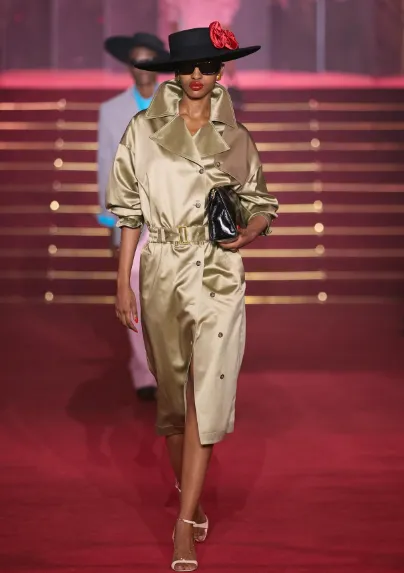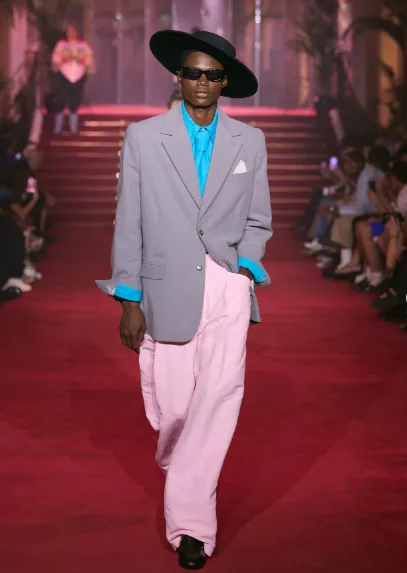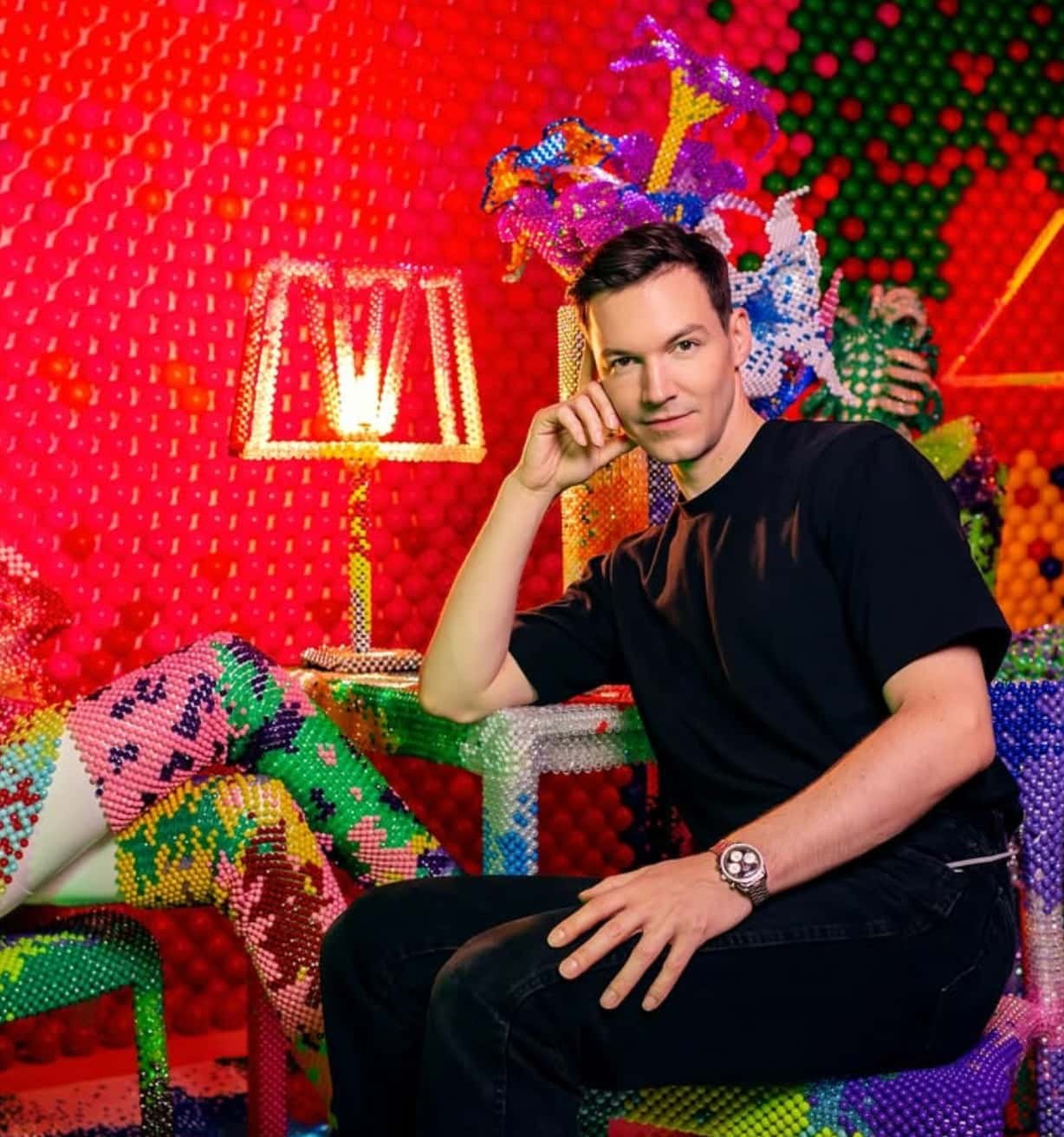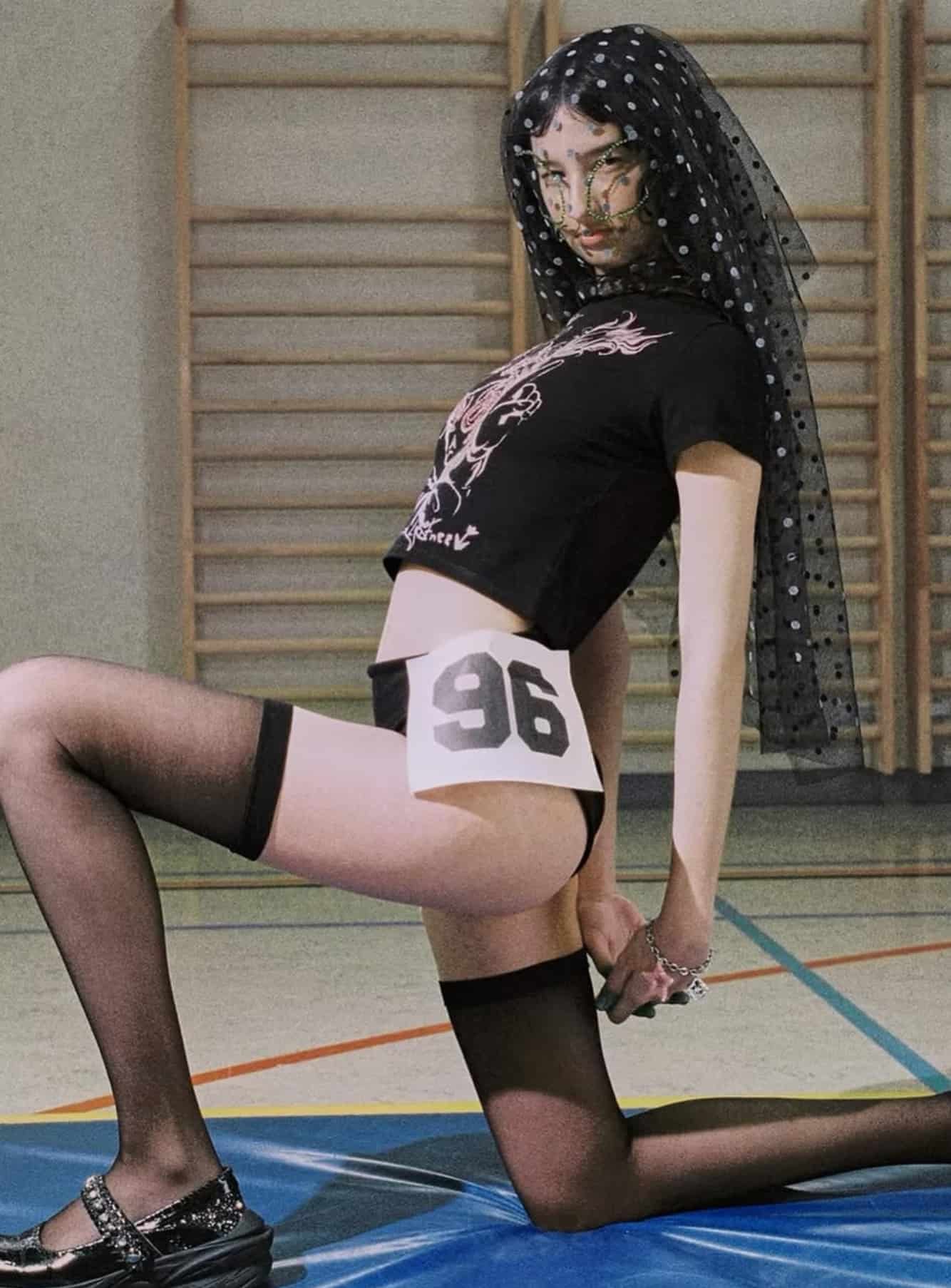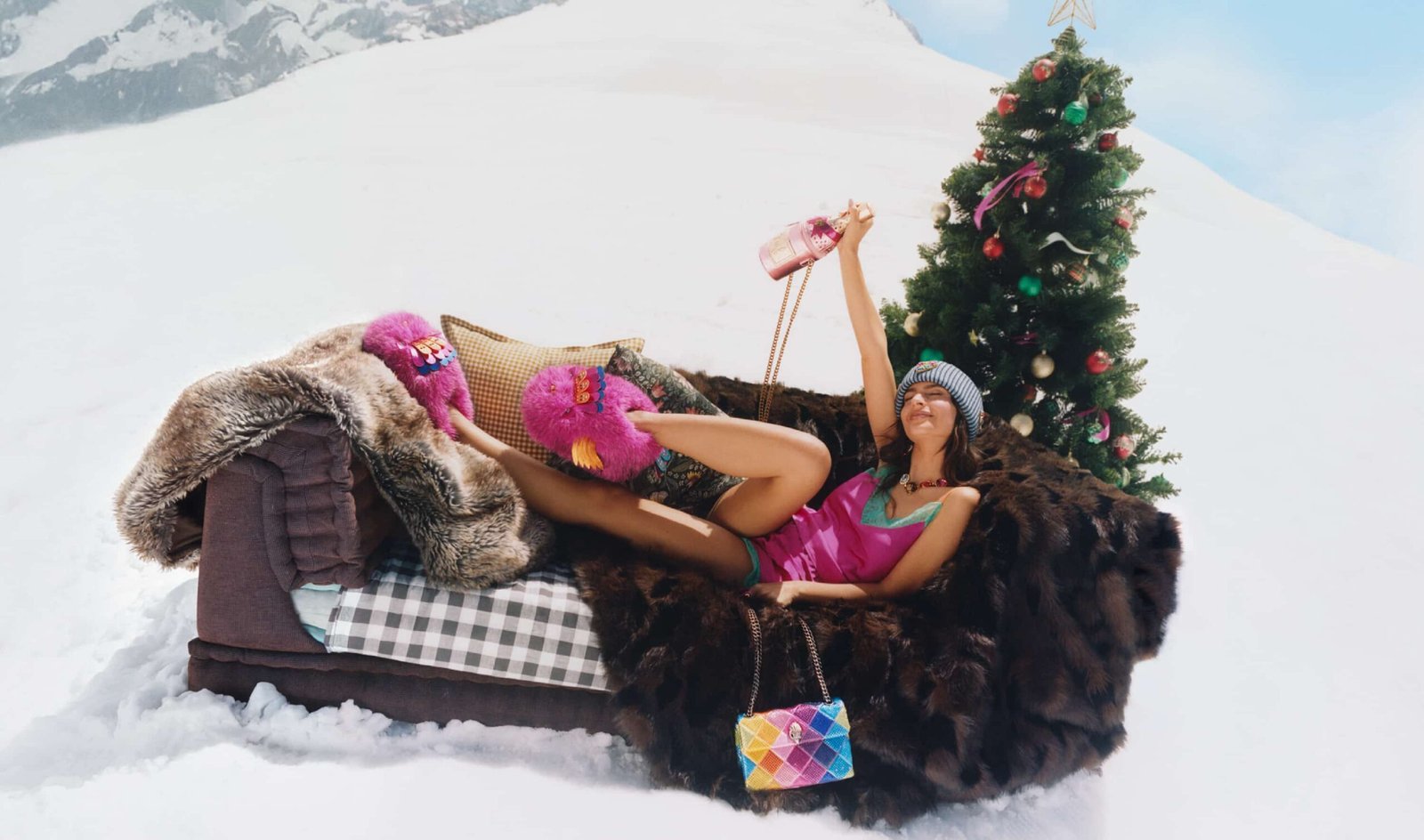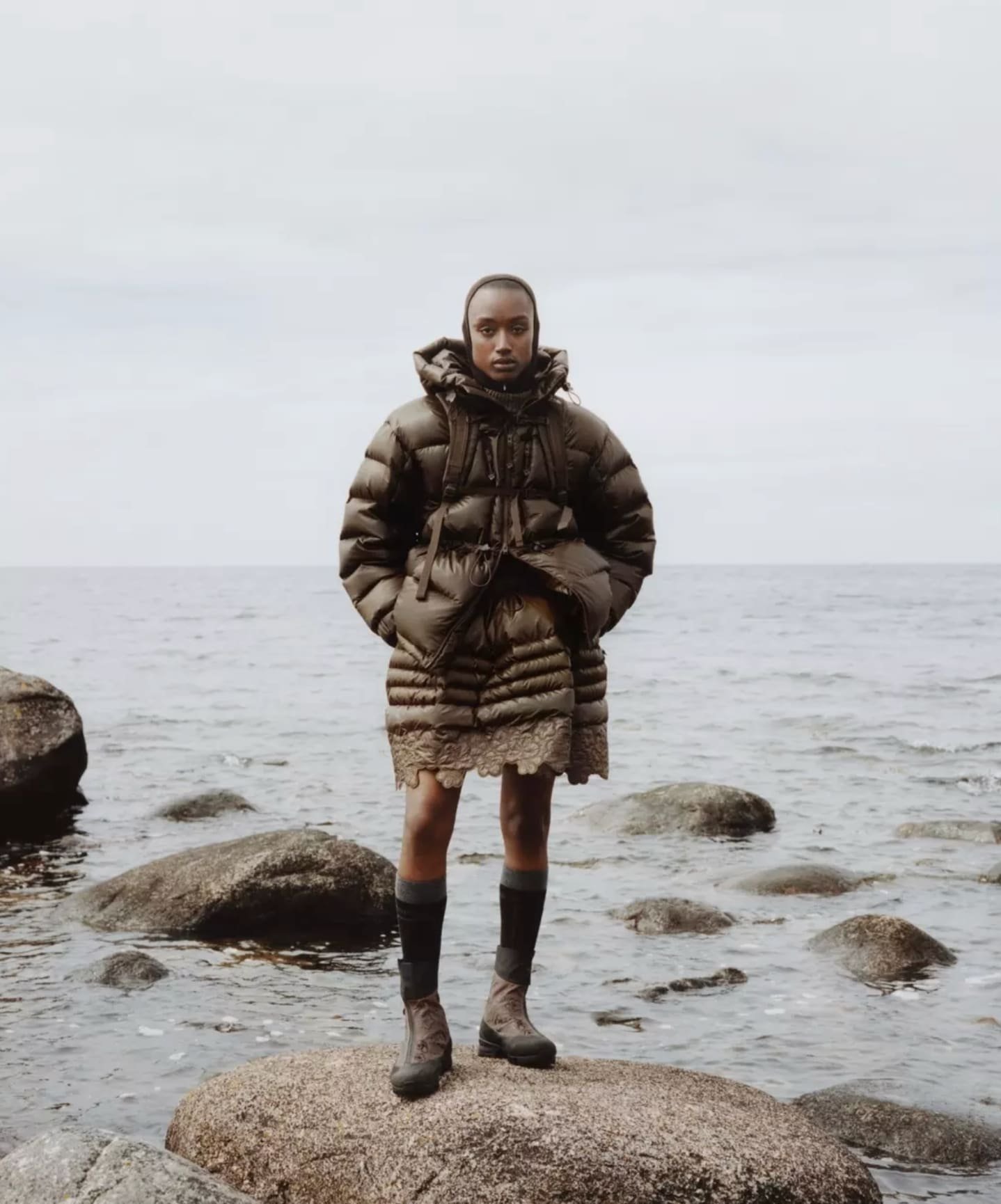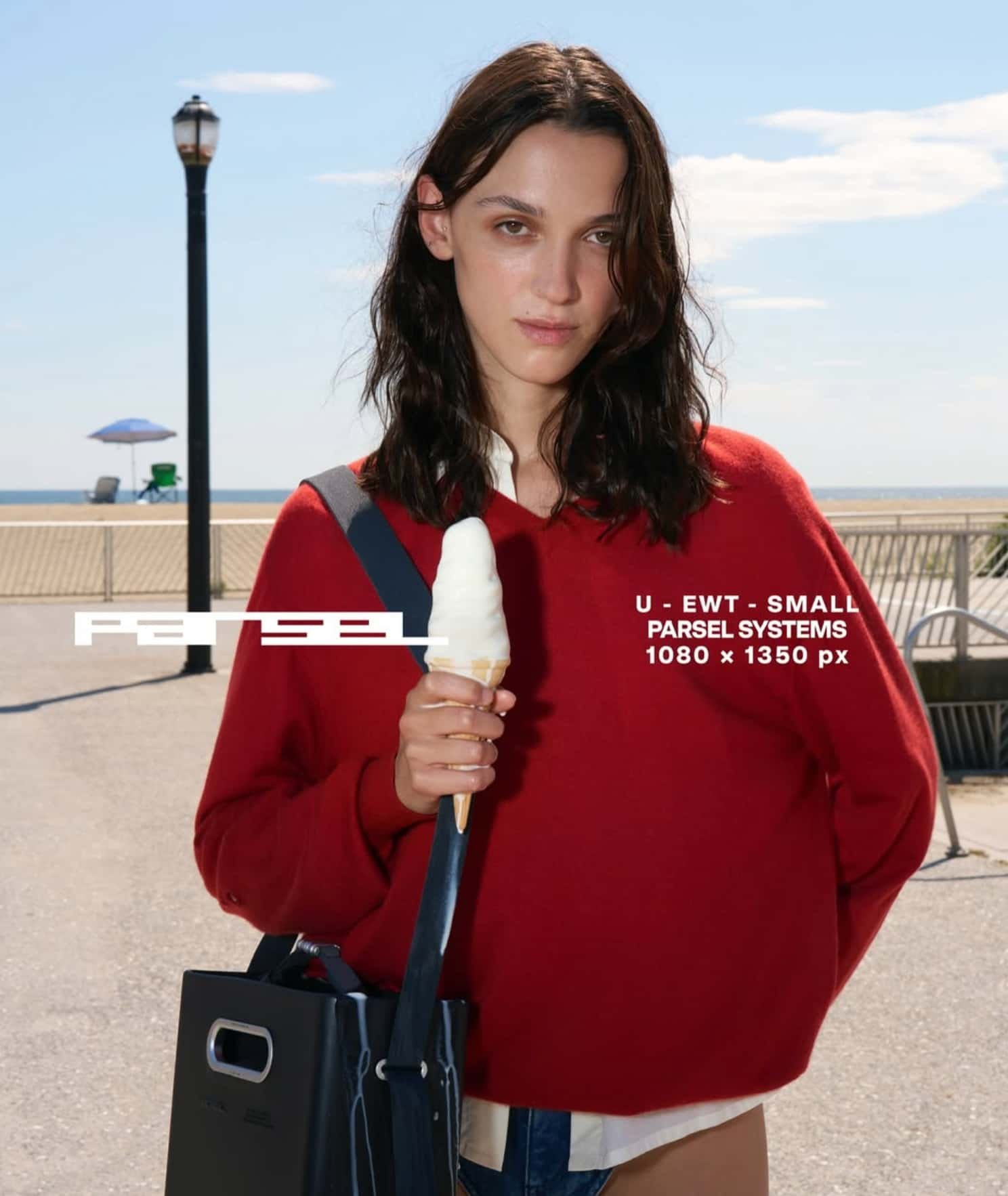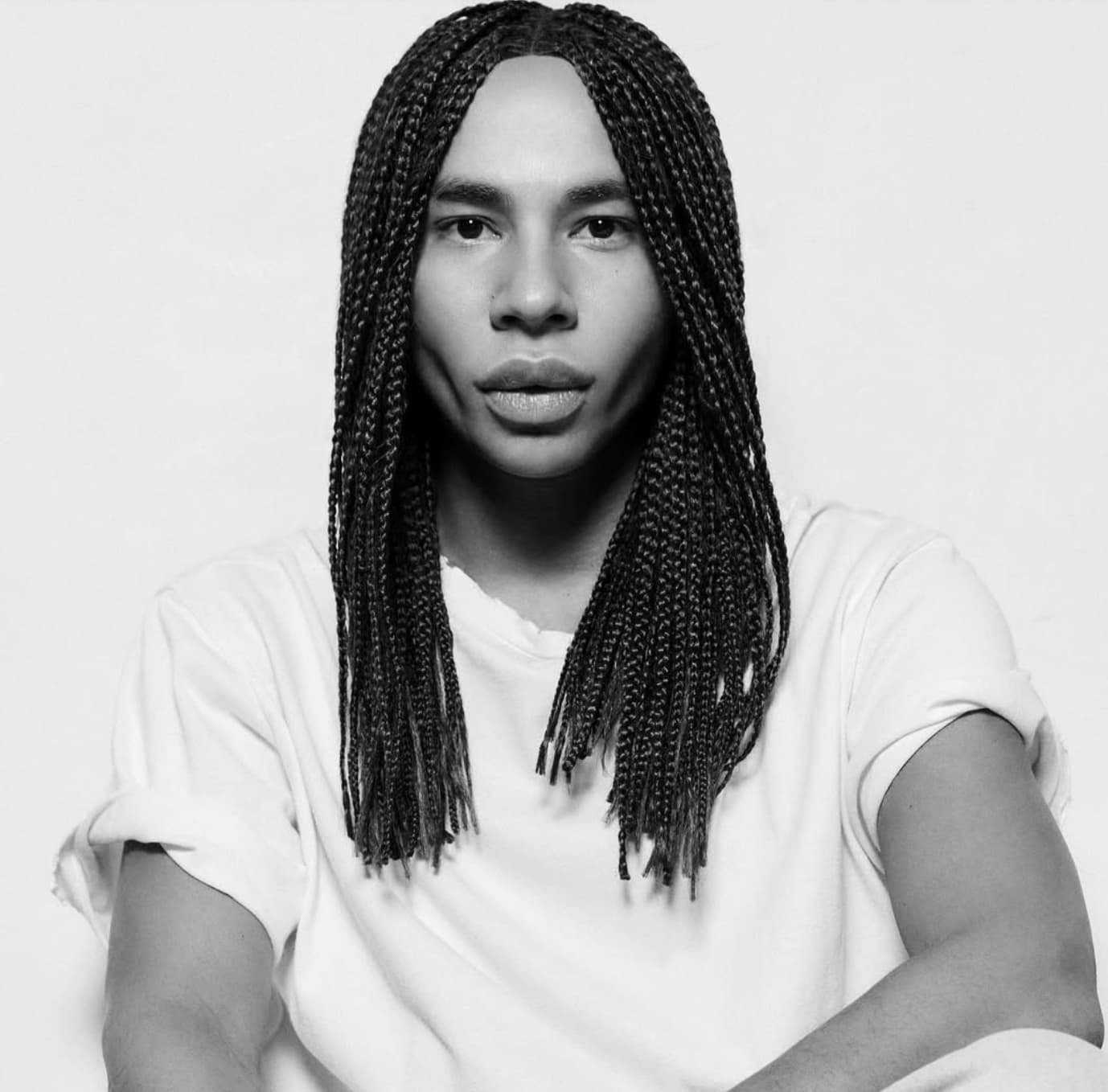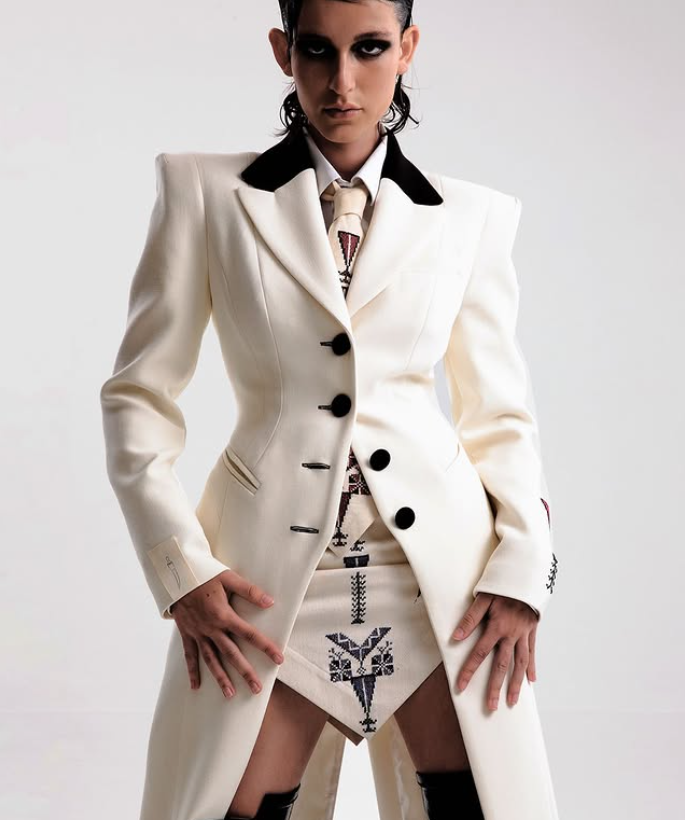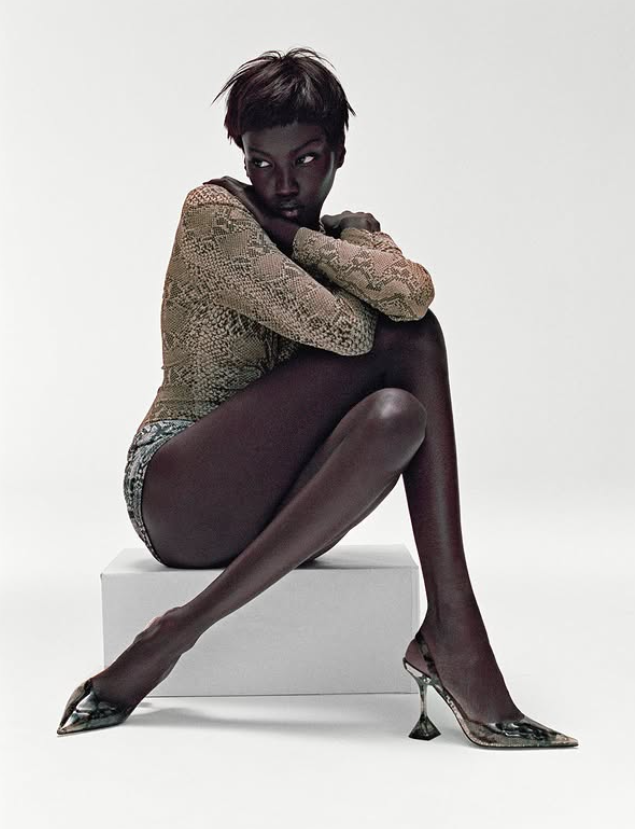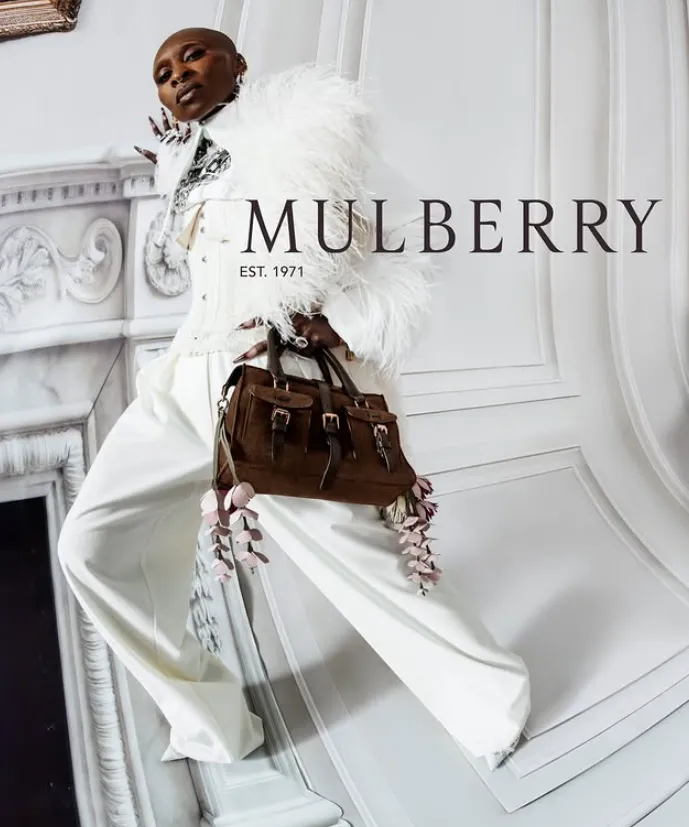In a runway show that felt more like a battle cry than a fashion presentation, Willy Chavarria proved once again that fashion is not merely aesthetic — it is social structure, political body, living voice. His SS26 collection, HURON —named after his hometown in California— was an offering to the stories fashion rarely tells: those of immigrants, of Latinos, of the unseen. From the opening moment, it was clear this would not be business as usual. It was ritual.
The show opened with a performance installation: a group of men, dressed head-to-toe in pristine white Cholo-style silhouettes, knelt on the runway as a melancholic version of “California Dreamin’” played. A gesture charged with meaning: a tribute to those detained and deported by ICE, a direct response to Trump-era immigration policies, and a poetic affirmation of existence. The show invitation simply read: “NOTICE OF RIGHT TO EXIST.” Fashion with soul, with blood.
Then the runway came alive with the live vocals of Mexican singer Vivir Quintana. If the prelude was a wound, what followed was dignity draped over that pain. Chavarria took his visual language to a new altitude, sharpening codes he’s known for while deepening the emotional register. His iconic Zoot suits —wide shoulders, tight waists, pleated trousers— were remixed with brutalist elegance, precision tailoring and bold new hues.
Womenswear stepped into the spotlight. The women of HURON wore 1950s office silhouettes — powerful, sculpted, commanding. Elevated streetwear followed suit: long shorts, high socks, oversized tailoring with full Chicano attitude. The palette moved from moody to poetic: dusty pastels, satin neutrals, saturated blues.
For the first time, Chavarria ventured into accessories, unveiling handbags and clutches in vintage-inspired silhouettes. Every item felt like it held memory, as if pulled from a life still unfolding. The casting, thanks to an open call, was a masterstroke: emerging talents shared the catwalk with the likes of Kai-Isaiah Jamal, Stefon Diggs, Amelia Gray, and Paloma Elsesser, delivering a show that felt real, magnetic, and grounded. Diversity here is not decoration — it’s foundation.
Midway, the performance paused for a dedicated reveal: the Willy Chavarria x adidas capsule. Framed as a show within the show, the mini-collection pulsed with athletic street intent: long three-stripe shorts layered over boxers, fresh sneakers, hats embroidered with “Hardcore” and “Willy Chavarria Fashion Service”. More than sportswear, this was gear for a future tribe.
The third act brought glamour — eveningwear, but with subtext. Embroidered floral suits, off-the-shoulder balloon gowns, and 1950s hourglass silks closed the show with sculptural grace. These were not red carpet gowns for the elite — they were statements of dignity, redesigned for those who fight to belong.
Willy emerged in a sleek purple suit, regal and resolute, and accepted a bouquet of red roses. It was a coronation, not a closing. As he said last season: “Right now the American Dream is simply to preserve our rights as humans and to afford a decent life.” That message hits harder now. And on this runway, it walked — it was seen, heard, and fiercely applauded.

